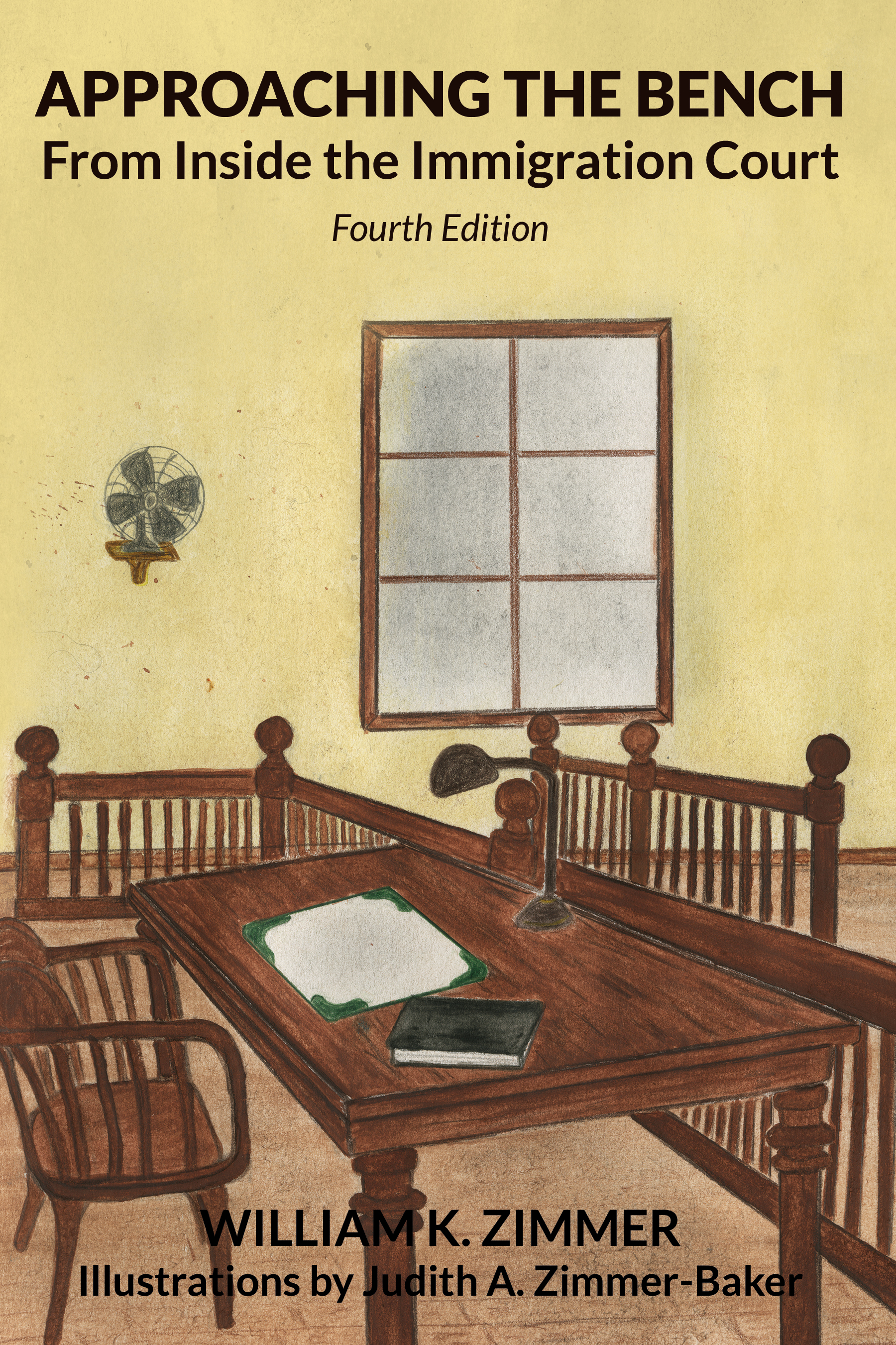The Question of Nexus and Mixed Motives

As predicted in a previous post, rationales articulated in certain vacated asylum decisions are still alive and well.
For example, in Matter of A-B-, 28 I&N Dec. 199 (A.G. 2021) (now known as "A-B- II") citing Matter of L-E-A-, 27 I&N Dec. 40, 43–44 (BIA 2017) (now known as "L-E-A- I") both vacated by Attorney General Garland on June 16, 2021 (See Matter of A-B-, 28 I&N Dec. 307 (A.G. 2021) and Matter of L-E-A- 28 I&N Dec. 304 (A.G. 2021)), then Acting Attorney General Jeffrey A. Rosen concluded in part that the proper standard for determining whether an asylum applicant has satisfied the nexus requirement in mixed motive cases is:
- the protected ground must be a “but-for” cause of (i.e. central reason for) the wrongdoer’s persecutory act(s); and
- must play more than a minor role. In other words, it cannot be incidental or tangential to another reason for the wrongdoer’s persecutory act(s).
See A-B- II, at 208, 212 (citing vacated L-E-A- I).
On July 29, 2021, the Fifth Circuit Court of Appeal appeared to indicate agreement with these nexus principals established in vacated A-B- II and L-E-A- I. Edith Nohemi Vazquez-Guerra; Wendy Chantal Barragan-Vazquez, v. Merrick Garland (5th Cir. July 29, 2021) No. 18-60828.
The procedural history, facts of record, holding and rationale in Edith Nohemi Vazquez-Guerra; Wendy Chantal Barragan-Vazquez, v. Merrick Garland (5th Cir. July 29, 2021) No. 18-60828 are as follows:
Case History
The Department of Homeland Security (“DHS”) served the Petitioner and her daughter a notice to appear charging that they are removable under section 212(a)(7)(A)(i)(I) of the Immigration and Nationality Act, as amended (“the Act”) as aliens without valid entry documents at the time of application for admission.
The Petitioner filed an application for asylum and withholding of removal.
The Immigration Judge denied her application for asylum and withholding of removal, and the Board of Immigration Appeals (“BIA”) dismissed the Petitioner's appeal.
Facts of Record
The Petitioner is a Mexican citizen who is seeking asylum and withholding of removal for herself and her minor daughter.
The Petitioner first entered the United States illegally in 2006.
While the Petitioner was living in the United States, her brother was allegedly beaten and kidnapped by the Zetas (a criminal gang enterprise in Mexico) in June 2013, in Mexico.
The Petitioner returned to Mexico in July 2015.
Shortly after her return to Mexico, the Petitioner contacted the city council and police to inquire about the kidnapping and disappearance of her brother. She made three or four inquiries to the authorities about the status of the investigation without success.
A few weeks later, in September 2015, masked men from the Zetas forced their way into the Petitioner’s house while she was sleeping. While pointing guns at her head, the men told her she “needed to quit looking for [her] brother,” threatened that she “would meet his same fate” if she continued investigating, and “warned [her] not to go to police.”
Days later, more “armed men” from the Zetas allegedly followed the Petitioner in a pickup truck while she was in a taxi on her way to meet her daughter. She exited the taxi, “fearing that they thought [she] was going to the downtown police station,” and eluded them in a crowded shopping area.
The Petitioner then fled to a neighboring city to hide. But the threats continued.
Though she did not experience additional direct encounters with the Zetas, they “left [her] a message” in the form of “pieces of paper with things written on it” in which they warned that “if [she] continued to investigate about [her] brother . . . the same thing was going to happen to [her] . . . and all [her] family, one by one.”
The Petitioner did not dispute that her siblings are all living in Mexico and that there is no evidence that they have been threaded or harmed by the Zetas.
Nevertheless, the threats precipitated the Petitioner’s decision to leave Mexico.
She and her daughter last arrived in the United States at the end of September 2015.
Holding
Petition for Review DENIED (upholding the Immigration Judge's denial of the Petitioner's asylum claim and dismissal of her appeal by the BIA).
Rationale
According to the Fifth Circuit Court of Appeal:
- The Petitioner’s assertion that, but for her familial relationship with her brother, she would not have investigated his disappearance and the Zetas would not be threatening her fails because the assertion rests entirely on the motivations of the Petitioner, instead of the alleged persecutor.
- The nexus test requires determination of whether the protected ground is one central reason motivating the persecutor, not the persecuted.
- There is substantial record evidence that the Zetas threatened the Petitioner because she was investigating their actions—not because of any animus toward her family.
- In past precedent, the Fifth Circuit Court of Appeal had found no persecution on account of family status where, inter alia, “other members of [petitioner’s] family, who have remained in [her native country], have not faced persecution on the basis of their membership in the family.” Ramirez-Mejia v. Lynch, 794 F.3d 485, at 493 (5th Cir. 2015).
- With regard to the actual motive of the alleged persecutor in the record under review, the threats or attacks motivated by criminal intentions do not provide a basis for protection under asylum law. See Thuri v. Ashcroft, 380 F.3d 788, at 793 (5th Cir. 2004).
- Finally, the Fifth Circuit Court of Appeal reasoned that under the nexus test, the Petitioner’s alleged protected trait—her particular social group—is, at best, incidental, tangential, superficial, or subordinate to another reason for harm, and not one central reason for the feared persecution.
Edith Nohemi Vazquez-Guerra; Wendy Chantal Barragan-Vazquez, v. Merrick Garland, at pp. 2-9 (5th Cir. July 29, 2021) No. 18-60828.
Commentary
The Fifth Circuit Court of Appeal’s rationale sounds very much like the vacated A-B- II and L-E-A- I. Does it not?
The reader might gain a better understanding of the Fifth Circuit Court of Appeal’s Rosenesque interpretation of asylum law relating to nexus by contrasting it to the broader standard articulated in the Fourth Circuit Court of Appeal which simply asks “why [the applicant], and not another person, was threatened” or harmed. Alvarez Lagos v. Barr, 927 F.3d 236, at 250 (4th Cir. 2019).
In fact, the Petitioner in Edith Nohemi Vazquez-Guerra; Wendy Chantal Barragan-Vazquez, v. Merrick Garland relied on Fourth Circuit Court of Appeal precedent in her petition for review. Cruz v. Sessions, 853 F.3d 122 (4th Cir. 2017). The Fifth Circuit Court of Appeal distinguished Cruz v. Sessions and begged to differ with it. Edith Nohemi Vazquez-Guerra; Wendy Chantal Barragan-Vazquez, v. Merrick Garland, at pp. 7, 8.
It seems that issues relating to the required nexus between the motive of an alleged persecutor and a protected ground that will justify an asylum claim usually raise the specter of the United States Supreme Court decision in INS v. Zacarias, 570 U.S. 478 (1992). Surprisingly, the Fifth Circuit Court of Appeal did not cite INS v. Zacarias in Edith Nohemi Vazquez-Guerra; Wendy Chantal Barragan-Vazquez, v. Merrick Garland.
Consider hypothetically a guerrilla organization that attempts to forcibly recruit a person by threatening or harming that person’s relatives. According to the United States Supreme Court, forcible recruitment of a person for the purpose increasing ranks of fighters to carry out a war with the government is not persecution. INS v. Zacarias, 570 U.S. 478 (1992).
Presuming the forcible recruitment target’s nuclear family can qualify as a particular social group, the threatened or harmed relatives in the jurisdiction of the Fourth Circuit Court of Appeal might successfully establish a persecution claim by asserting that “but for” family membership the relatives would not have been threatened or harmed. In other words, family membership is why the relatives were threatened or harmed, instead of other persons, regardless of the primary motive to forcibly recruit a different person.
Mr. Rosen would say (and apparently the Fifth Circuit Court of Appeal would agree) that, even if the relative in this hypothetical example is a member of a particular social group, the central motive of the persecutor is forcible recruitment, and family membership is tangential or incidental to the forcible recruitment motive.
Moreover, Mr. Rosen would assert (and apparently the Fifth Circuit Court of Appeal would agree) that, since the guerrillas threatened or harmed the relatives for the central reason of forcible recruitment, not on account of the protected ground of family membership, a decision maker can only deny the asylum claim.
An odd consequence of the Fourth Circuit Court of Appeal’s approach to establishing nexus is apparently left unmentioned by Mr. Rosen in A-B- II and the Fourth Circuit Court of Appeal in Alvarez Lagos v. Barr.
If the person who is the target of the forcible recruitment filed an asylum application the forcible recruitment motive of the persecutor would not qualify the recruitment target for asylum, even if the recruitment target was or will be actually threatened and harmed. As established in INS v. Zacarias, the persecutor’s forcible recruitment motive does not align with a protected ground (i.e. race, religion, nationality, membership in a particular social group, or political opinion).
Nevertheless, application of the Fourth Circuit standard (i.e. simply ask why the asylum applicant, and not another person, was threatened or harmed) allows any threatened or harmed relative of the recruitment target to legally qualify for asylum. Every family member, except the person targeted for recruitment, would have a pathway to asylum. This seems to be an odd result.
The only conclusion that can be stated with certainty is that, in spite of Attorney General Garland's aggressive vacation of his predecessors' decisions, the challenge of establishing a nexus between the motivation of the alleged persecutor and the alleged particular social group of the asylum applicant will not go away in the shadow of INS v. Zacarias.

